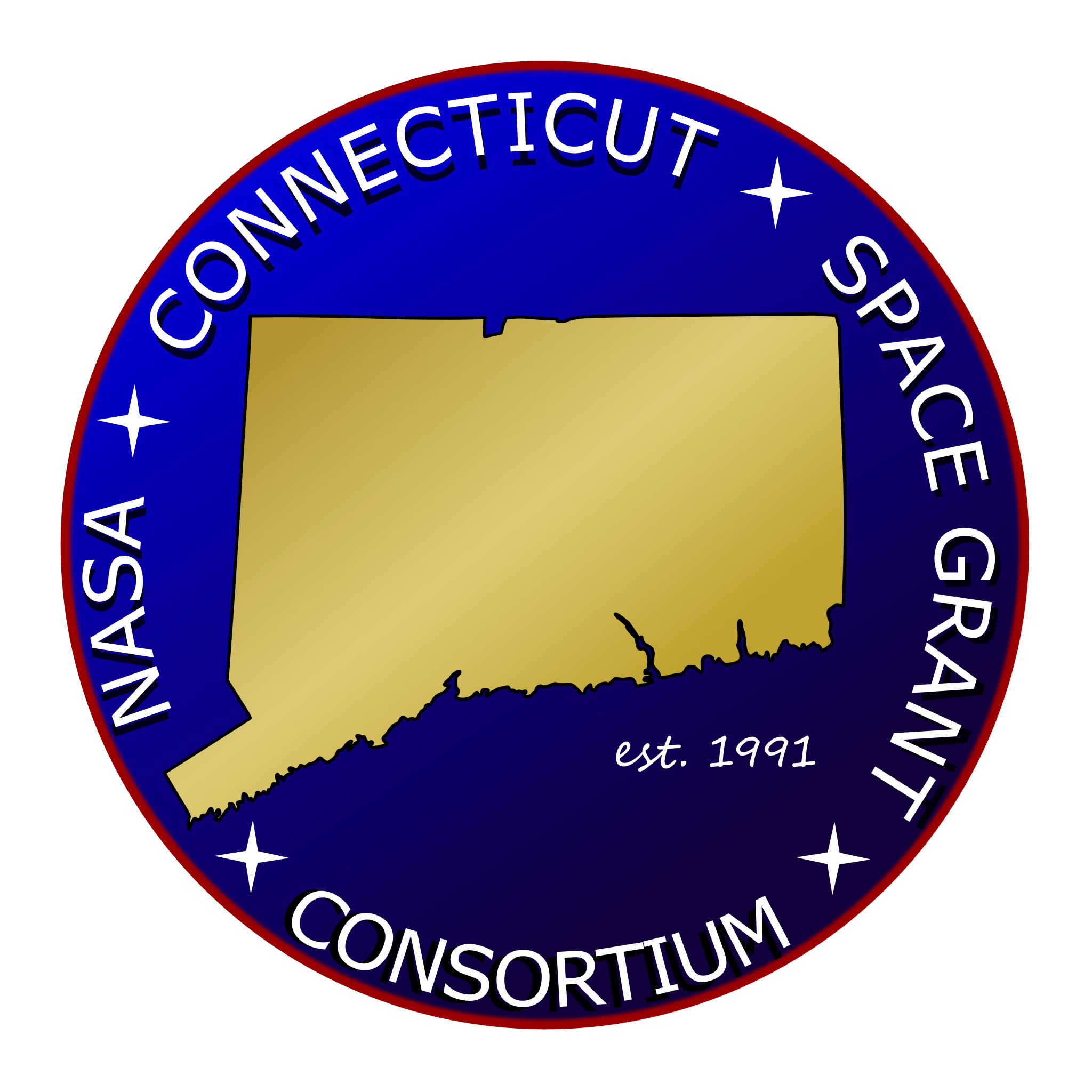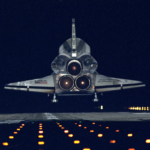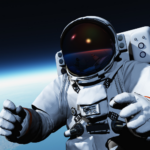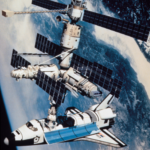About NASA
Learn more about NASA online
NASA Resources:
- Learn about NASA’s Commercial Crew Program
- Learn about Solar System Ambassadors
- Sign up for NASA EXPRESS Newsletter
NASA Space Grant
NASA initiated the National Space Grant College and Fellowship Project, also known as Space Grant, in 1989. Space Grant is a national network of colleges and universities. These institutions are working to expand opportunities for Americans to understand and participate in NASA’s aeronautics and space projects by supporting and enhancing science and engineering education, research and public outreach efforts. The Space Grant national network includes over 850 affiliates from universities, colleges, industry, museums, science centers, and state and local agencies. These affiliates belong to one of 52 consortia in all 50 states, the District of Columbia and the Commonwealth of Puerto Rico.
The 52 consortia fund fellowships and scholarships for students pursuing careers in science, mathematics, engineering and technology, or STEM, as well as curriculum enhancement and faculty development. Member colleges and universities also administer pre-college and public service education projects in their states.
NASA Mission Directorates
Learn about the NASA Mission Directorates below:
Aeronautics Research Missions Directorate (ARMD) conducts high-quality, cutting-edge research that generates innovative concepts, tools, and technologies to enable revolutionary advances in our Nation’s future aircraft, as well as in the airspace in which they will fly. ARMD programs will facilitate a safer, more environmentally friendly, and more efficient national air transportation system. Using a Strategic Implementation Plan, NASA ARMD sets forth the vision for aeronautical research aimed at the next 25 years and beyond. It encompasses a broad range of technologies to meet future needs of the aviation community, the nation, and the world for safe, efficient, flexible, and environmentally sustainable air transportation. Additional information on ARMD can be found at https://www.nasa.gov/aeroresearch/about-armd
Exploration Systems Development Mission Directorate (ESDMD) defines and manages systems development for programs critical to the NASA’s Artemis program and planning for NASA’s Moon to Mars exploration approach in an integrated manner. ESDMD manages the human exploration system development for lunar orbital, lunar surface, and Mars exploration. ESDMD leads the human aspects of the Artemis activities as well as the integration of science into the human system elements. ESDMD is responsible for development of the lunar and Mars architectures. Programs in the mission directorate include Orion, Space Launch System, Exploration Ground Systems, Gateway, Human Landing System, and Extravehicular Activity (xEVA) and Human Surface Mobility. Additional information on ESDMD can be found at: https://www.nasa.gov/directorates/exploration-systems-development
Mission Support Directorate (MSD) enables NASA mission success. This provides the tools, people, and capabilities to ensure NASA leadership in aerospace, science, and exploration. From the legal and procurement teams who secure vital contracts and acquisitions to the infrastructure management teams who oversee NASA facilities, roadways, and utilities. From the IT teams who provide dependable platforms and innovative tools to the human resources teams who ensure access to top talent. The work of the mission support community is foundational to mission success. Additional information on MSD can be found at: https://www.nasa.gov/msd/
Science Mission Directorate (SMD) leads the Agency in four areas of research: Earth Science, Heliophysics, Planetary Science, and Astrophysics. SMD, using the vantage point of space to achieve with the science community and our partners a deep scientific understanding of our planet, other planets and solar system bodies, the interplanetary environment, the Sun and its effects on the solar system, and the universe beyond. In so doing, we lay the intellectual foundation for the robotic and human expeditions of the future while meeting today’s needs for scientific information to address national concerns, such as climate change and space weather. At every step we share the journey of scientific exploration with the public and partner with others to substantially improve science, technology, engineering and mathematics (STEM) education nationwide. Additional information on SMD can be found at: https://science.nasa.gov/
Space Operations Mission Directorate (SOMD) is responsible for enabling sustained human exploration missions and operations in our solar system. SOMD manages NASA’s current and future space operations in and beyond low-Earth orbit (LEO), including commercial launch services to the International Space Station. SOMD operates and maintains exploration systems, develops and operates space transportation systems, and performs broad scientific research on orbit. In addition, SOMD is responsible for managing the space transportation services for NASA and NASA-sponsored payloads that require orbital launch, and the agency’s space communications and navigation services supporting all NASA’s space systems currently in orbit. Additional information on SOMD can be found at: https://www.nasa.gov/directorates/space-operations-mission-directorate
Space Technology Mission Directorate (STMD) is responsible for developing the crosscutting, pioneering, new technologies, and capabilities needed by the agency to achieve its current and future missions. By investing in bold, broadly applicable, disruptive technology that industry cannot tackle today, STMD seeks to mature the technology required for NASA’s future missions in science and exploration while proving the capabilities and lowering the cost for other government agencies and commercial space activities. STMD engages and inspires thousands of technologists and innovators creating a community of our best and brightest working on the nation’s toughest challenges. By pushing the boundaries of technology and innovation, STMD allows NASA and our nation to remain at the cutting edge. Additional information on the Space Technology Mission Directorate (STMD) can be found at: https://www.nasa.gov/directorates/spacetech/home/index.html
NASA Center Internships
Are you interested in pursuing an internship at a NASA center? NASA interns work with leading experts and gain valuable experience. To learn more about internships and how to apply, as well as information about current and past interns, visit the Office of STEM Engagement site at https://intern.nasa.gov/.
National Space Grant Foundation Store
When you support the National Space Grant Foundation by shopping online, you in turn help support the NASA CT Space Grant Consortium. A portion of your purchase of gear, globes, science kits, toys and games, and more all help support the National Space Grant Foundation and foster a love of STEM education and programs.
Shop the National Space Grant Foundation Store
You can learn more about the National Space Grant Foundation online, or follow them on social media:
Instagram: @spacegrantfoundation
Facebook: @SpaceGrantFoundation
Twitter: @N_SGFoundation
NASA Mission Directorates
Learn about the NASA Mission Directorates below:
Aeronautics Research Missions Directorate (ARMD) conducts high-quality, cutting-edge research that generates innovative concepts, tools, and technologies to enable revolutionary advances in our Nation’s future aircraft, as well as in the airspace in which they will fly. ARMD programs will facilitate a safer, more environmentally friendly, and more efficient national air transportation system. Using a Strategic Implementation Plan, NASA ARMD sets forth the vision for aeronautical research aimed at the next 25 years and beyond. It encompasses a broad range of technologies to meet future needs of the aviation community, the nation, and the world for safe, efficient, flexible, and environmentally sustainable air transportation. Additional information on ARMD can be found at https://www.nasa.gov/aeroresearch/about-armd
Exploration Systems Development Mission Directorate (ESDMD) defines and manages systems development for programs critical to the NASA’s Artemis program and planning for NASA’s Moon to Mars exploration approach in an integrated manner. ESDMD manages the human exploration system development for lunar orbital, lunar surface, and Mars exploration. ESDMD leads the human aspects of the Artemis activities as well as the integration of science into the human system elements. ESDMD is responsible for development of the lunar and Mars architectures. Programs in the mission directorate include Orion, Space Launch System, Exploration Ground Systems, Gateway, Human Landing System, and Extravehicular Activity (xEVA) and Human Surface Mobility. Additional information on ESDMD can be found at: https://www.nasa.gov/directorates/exploration-systems-development
Mission Support Directorate (MSD) enables NASA mission success. This provides the tools, people, and capabilities to ensure NASA leadership in aerospace, science, and exploration. From the legal and procurement teams who secure vital contracts and acquisitions to the infrastructure management teams who oversee NASA facilities, roadways, and utilities. From the IT teams who provide dependable platforms and innovative tools to the human resources teams who ensure access to top talent. The work of the mission support community is foundational to mission success. Additional information on MSD can be found at: https://www.nasa.gov/msd/
Science Mission Directorate (SMD) leads the Agency in four areas of research: Earth Science, Heliophysics, Planetary Science, and Astrophysics. SMD, using the vantage point of space to achieve with the science community and our partners a deep scientific understanding of our planet, other planets and solar system bodies, the interplanetary environment, the Sun and its effects on the solar system, and the universe beyond. In so doing, we lay the intellectual foundation for the robotic and human expeditions of the future while meeting today’s needs for scientific information to address national concerns, such as climate change and space weather. At every step we share the journey of scientific exploration with the public and partner with others to substantially improve science, technology, engineering and mathematics (STEM) education nationwide. Additional information on SMD can be found at: https://science.nasa.gov/
Space Operations Mission Directorate (SOMD) is responsible for enabling sustained human exploration missions and operations in our solar system. SOMD manages NASA’s current and future space operations in and beyond low-Earth orbit (LEO), including commercial launch services to the International Space Station. SOMD operates and maintains exploration systems, develops and operates space transportation systems, and performs broad scientific research on orbit. In addition, SOMD is responsible for managing the space transportation services for NASA and NASA-sponsored payloads that require orbital launch, and the agency’s space communications and navigation services supporting all NASA’s space systems currently in orbit. Additional information on SOMD can be found at: https://www.nasa.gov/directorates/space-operations-mission-directorate
Space Technology Mission Directorate (STMD) is responsible for developing the crosscutting, pioneering, new technologies, and capabilities needed by the agency to achieve its current and future missions. By investing in bold, broadly applicable, disruptive technology that industry cannot tackle today, STMD seeks to mature the technology required for NASA’s future missions in science and exploration while proving the capabilities and lowering the cost for other government agencies and commercial space activities. STMD engages and inspires thousands of technologists and innovators creating a community of our best and brightest working on the nation’s toughest challenges. By pushing the boundaries of technology and innovation, STMD allows NASA and our nation to remain at the cutting edge. Additional information on the Space Technology Mission Directorate (STMD) can be found at: https://www.nasa.gov/directorates/spacetech/home/index.html
NASA Center Internships
Are you interested in pursuing an internship at a NASA center? NASA interns work with leading experts and gain valuable experience. To learn more about internships and how to apply, as well as information about current and past interns, visit the Office of STEM Engagement site at https://intern.nasa.gov/.
National Space Grant Foundation Store
When you support the National Space Grant Foundation by shopping online, you in turn help support the NASA CT Space Grant Consortium. A portion of your purchase of gear, globes, science kits, toys and games, and more all help support the National Space Grant Foundation and foster a love of STEM education and programs.
Shop the National Space Grant Foundation Store
You can learn more about the National Space Grant Foundation online, or follow them on social media:
Instagram: @spacegrantfoundation
Facebook: @SpaceGrantFoundation
Twitter: @N_SGFoundation






